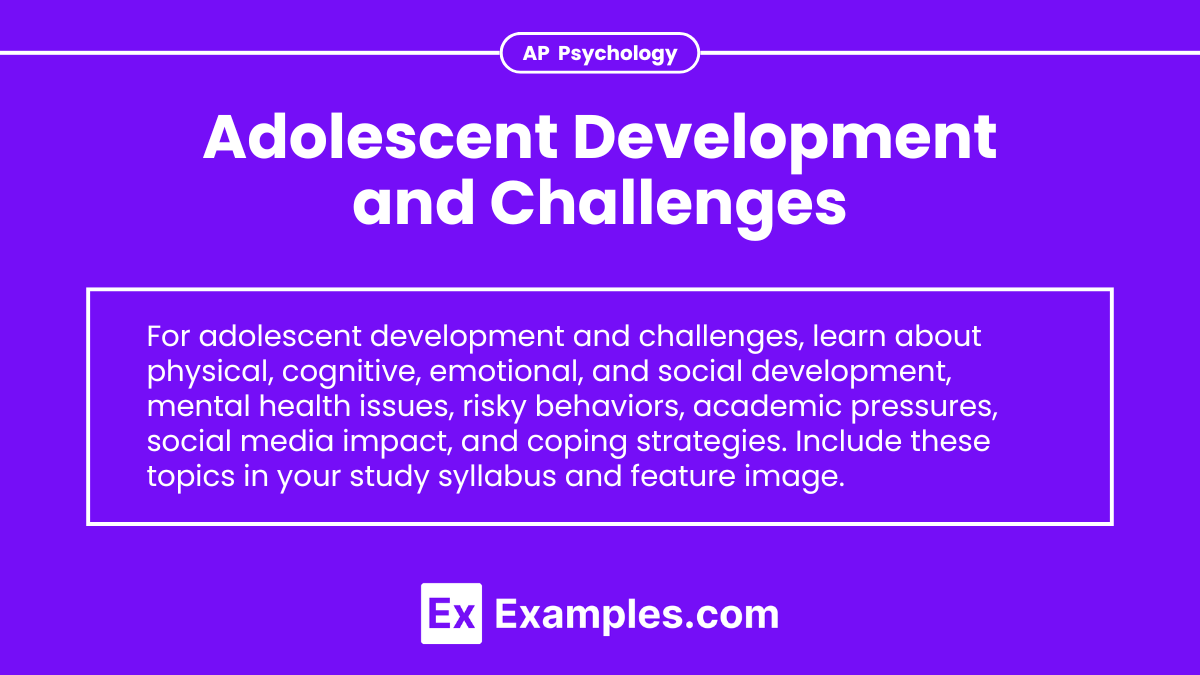Adolescent development marks a crucial phase of growth spanning ages 12 to 18, encompassing significant physical, cognitive, emotional, and social changes. In the context of AP Psychology, understanding these changes is essential for grasping the complexities of this developmental period. Key areas include puberty, cognitive advancements per Piaget, emotional development according to Erikson, and the influence of peer and family relationships. Recognizing the challenges, such as mental health issues and risky behaviors, is vital for a comprehensive understanding.
Learning Objectives
Focus on understanding the physical changes of puberty, cognitive advancements according to Piaget’s theory, emotional development stages per Erikson, and the impact of peer and family relationships. Additionally, learn about common mental health issues, risky behaviors, and the influence of social media on adolescents. Comprehend coping strategies and support systems that aid in healthy development to thoroughly grasp this critical developmental stage
1. Physical Development

Physical development in adolescence involves puberty, hormonal changes, and growth spurts, leading to sexual maturity and significant changes in body composition and brain development, all within the ecosystem of adolescent growth.
Puberty
- Definition: Puberty is the biological process that leads to sexual maturity.
- Key Changes:
- Primary Sex Characteristics: Development of organs directly related to reproduction (e.g., ovaries, testes).
- Secondary Sex Characteristics: Physical traits not directly involved in reproduction (e.g., breast development, facial hair).
- Growth Spurts: Rapid increase in height and weight.
Hormonal Changes
- Estrogen and Testosterone: These hormones trigger the development of primary and secondary sex characteristics.
- Impact on Behavior: Hormonal changes can influence mood and behavior, contributing to increased emotional volatility.
2. Cognitive Development
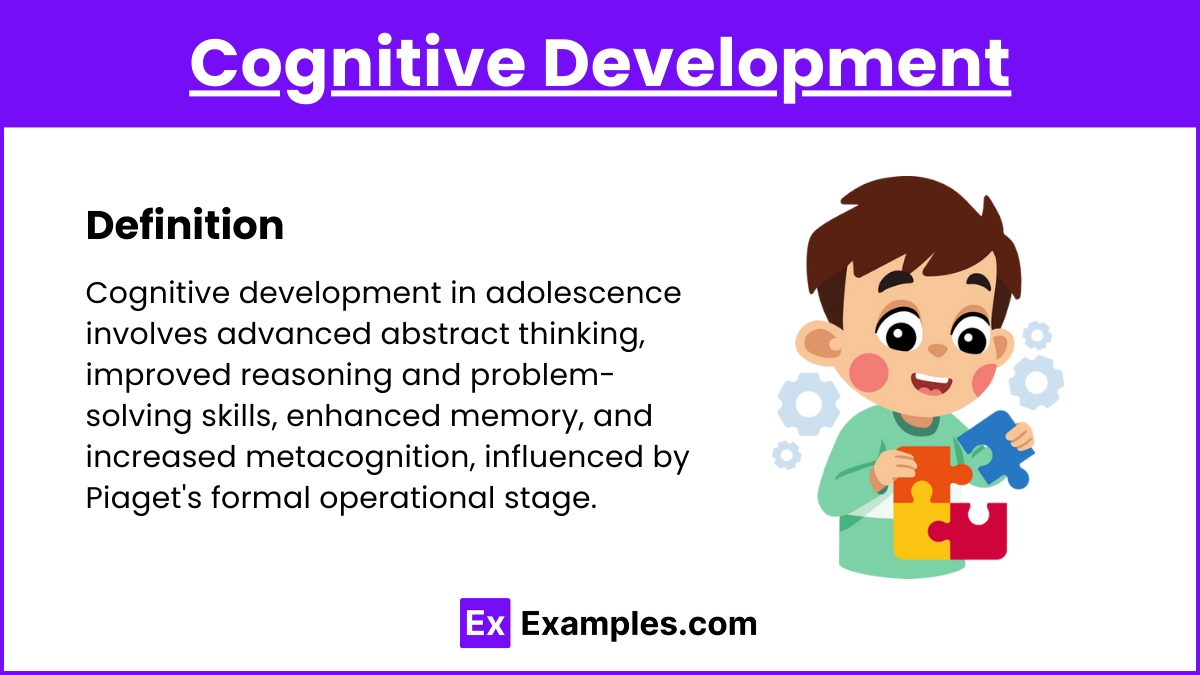
Cognitive development in adolescence involves advanced abstract thinking, improved reasoning, and enhanced memory, influenced by Piaget’s formal operational stage and increased metacognition.
Piaget’s Theory
- Formal Operational Stage: Adolescents enter this stage around age 12, characterized by the ability to think abstractly and reason logically.
- Hypothetical-Deductive Reasoning: Ability to develop hypotheses and systematically deduce the best path to solving a problem.
- Egocentrism: Includes the imaginary audience (belief that others are constantly watching) and personal fable (belief in one’s uniqueness and invincibility).
Information Processing
- Improvements in Memory: Enhanced working memory and long-term memory.
- Metacognition: Increased ability to think about one’s own thinking processes, leading to better self-regulation and planning.
3. Emotional Development
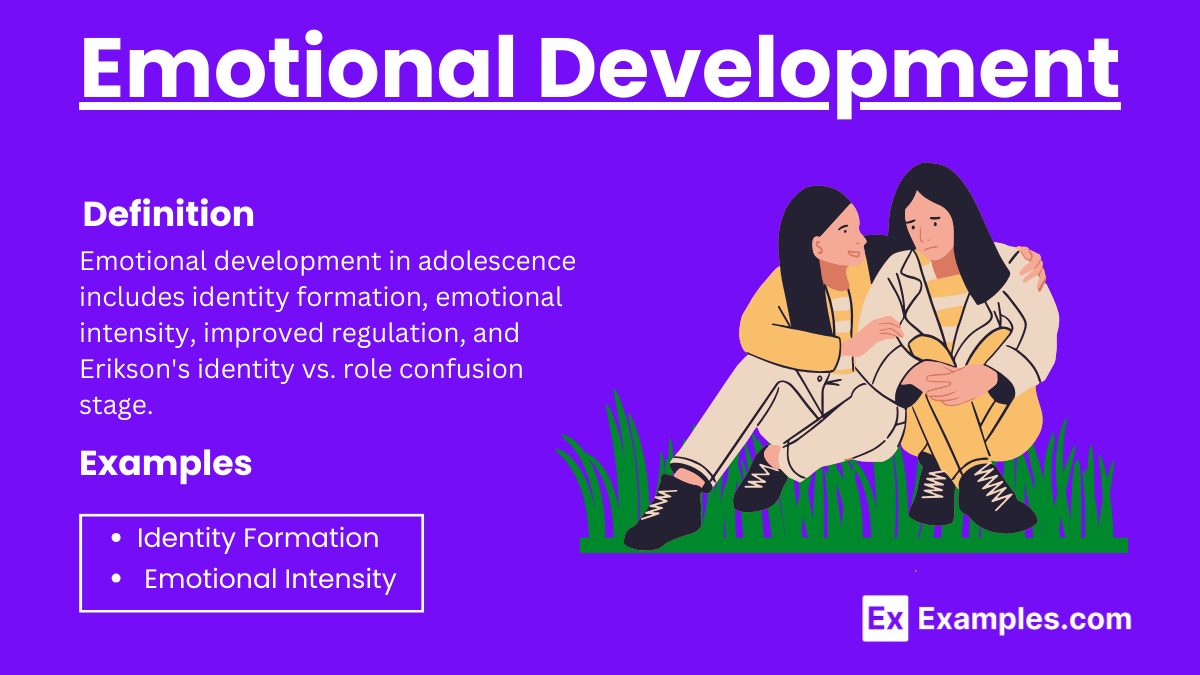
Emotional development in adolescence includes identity formation, increased emotional intensity, improved emotional regulation, and the impact of Erikson’s identity vs. role confusion stage.
Erikson’s Psychosocial Theory
- Identity vs. Role Confusion: The primary task of adolescence is developing a sense of identity. Success leads to a stable sense of self, while failure results in confusion about one’s role in society.
Emotional Regulation
- Increased Emotional Intensity: Hormonal changes can lead to heightened emotions.
- Coping Mechanisms: Developing effective strategies to manage stress and emotions is crucial during this period.
4. Social Development
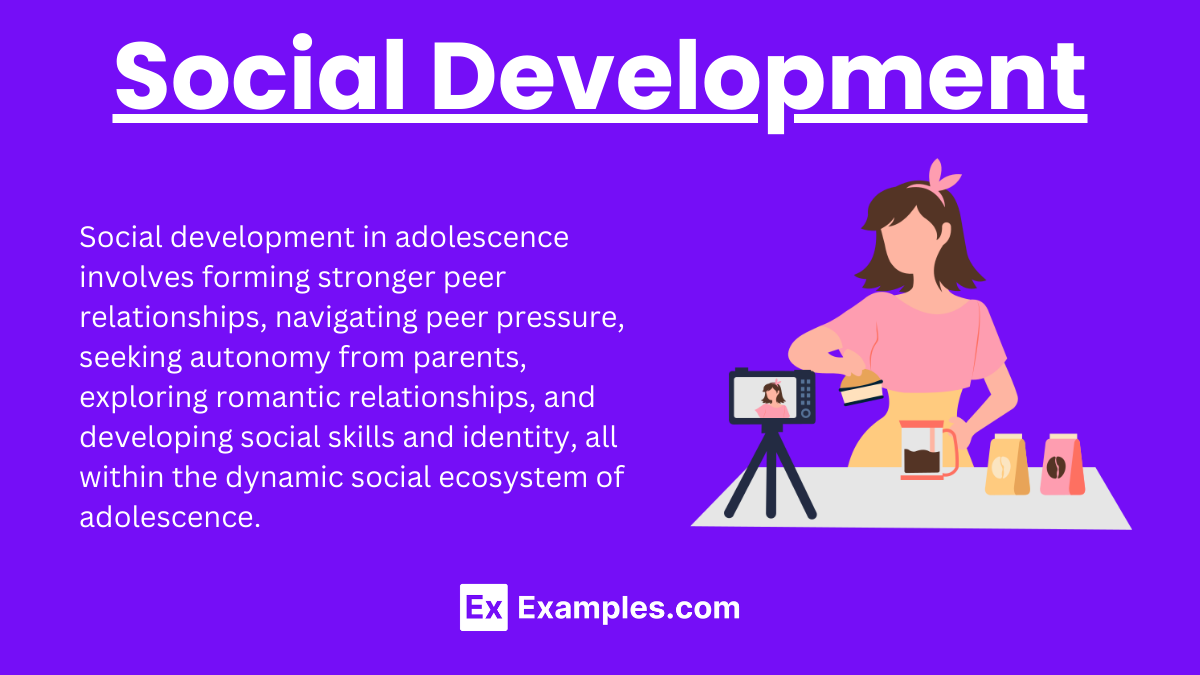
Social development in adolescence involves forming stronger peer relationships, navigating peer pressure, seeking autonomy from parents, and exploring romantic relationships, shaping social skills and identity.
Peer Relationships
- Importance of Peers: Peer influence becomes more significant as adolescents seek independence from parents.
- Peer Pressure: Adolescents may face pressure to conform to group norms, which can affect behavior and decision-making.
Family Relationships
- Parent-Adolescent Conflict: Increased desire for autonomy can lead to conflicts with parents. However, supportive family relationships are essential for healthy development.
Romantic Relationships
- Emergence of Romantic Interests: Adolescents begin to explore romantic relationships, which can contribute to identity formation and emotional development.
Challenges

Challenges in adolescence include mental health issues, risky behaviors, academic pressure, and the impact of social media, affecting emotional well-being and decision-making.
Mental Health Issues
- Depression and Anxiety: Common mental health issues during adolescence, often exacerbated by academic pressure, social challenges, and hormonal changes.
- Eating Disorders: Issues like anorexia nervosa and bulimia are more prevalent during adolescence due to body image concerns.
Risky Behaviors
- Substance Use: Experimentation with drugs and alcohol can lead to addiction and other health issues.
- Sexual Activity: Early sexual activity can result in unwanted pregnancies and sexually transmitted infections (STIs).
Academic Pressure
- Performance Anxiety: Pressure to perform well academically can lead to stress and burnout.
- Balancing Responsibilities: Managing schoolwork, extracurricular activities, and social life can be challenging.
Social Media Influence
- Cyberbullying: Increased use of social media can expose adolescents to cyberbullying, impacting their mental health.
- Body Image Issues: Exposure to idealized images on social media can affect self-esteem and body image.
Coping Strategies and Support
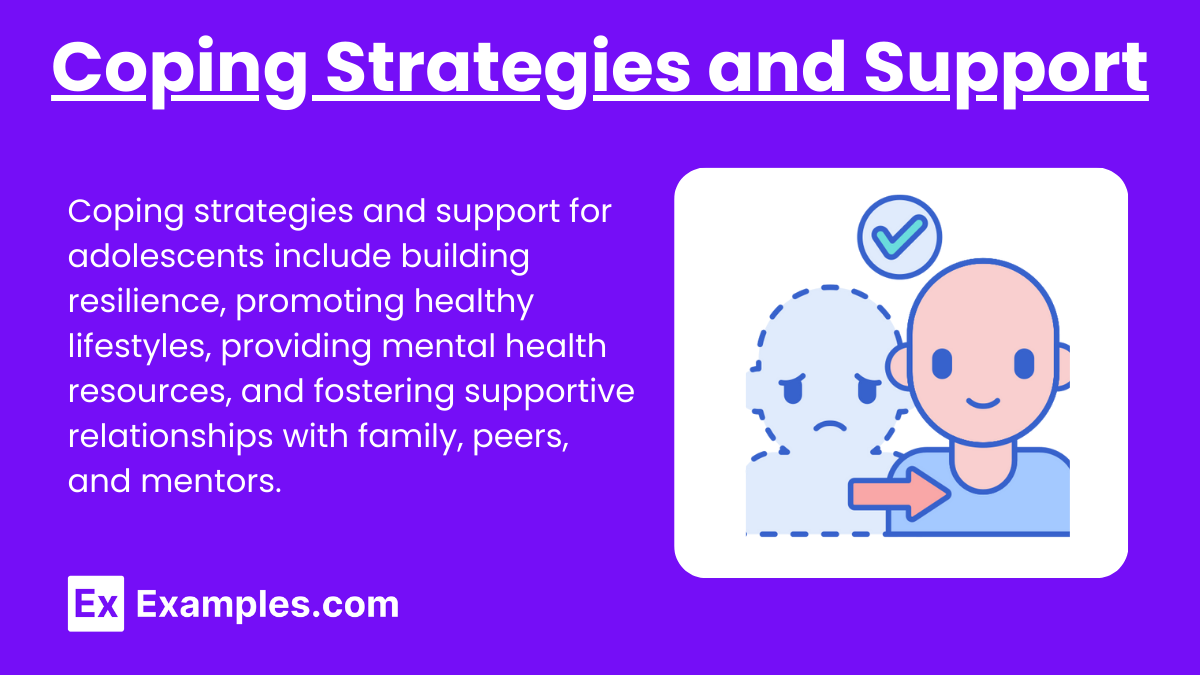
Coping strategies and support for adolescents include building resilience, promoting healthy lifestyles, providing mental health resources, and fostering supportive relationships with family, peers, and mentors.
Developing Resilience
- Building Coping Skills: Teaching adolescents effective coping mechanisms for stress and emotions.
- Support Systems: Encouraging strong support networks, including family, friends, and mentors.
Promoting Healthy Lifestyles
- Physical Activity: Regular exercise can improve physical and mental health.
- Healthy Eating: Proper nutrition is crucial for growth and development.
Mental Health Resources
- Counseling and Therapy: Access to mental health professionals can provide support for adolescents facing challenges.
- School Programs: Schools can offer programs that promote mental health Self awareness and provide resources for students.

